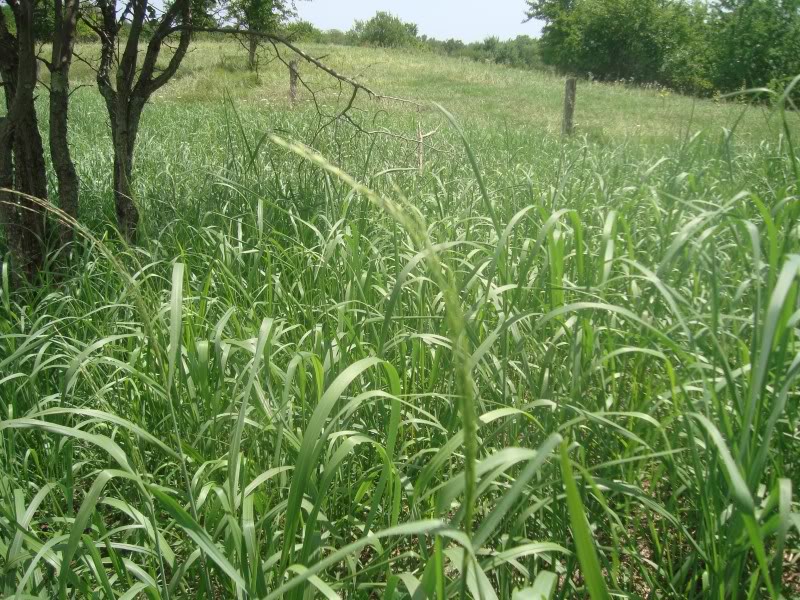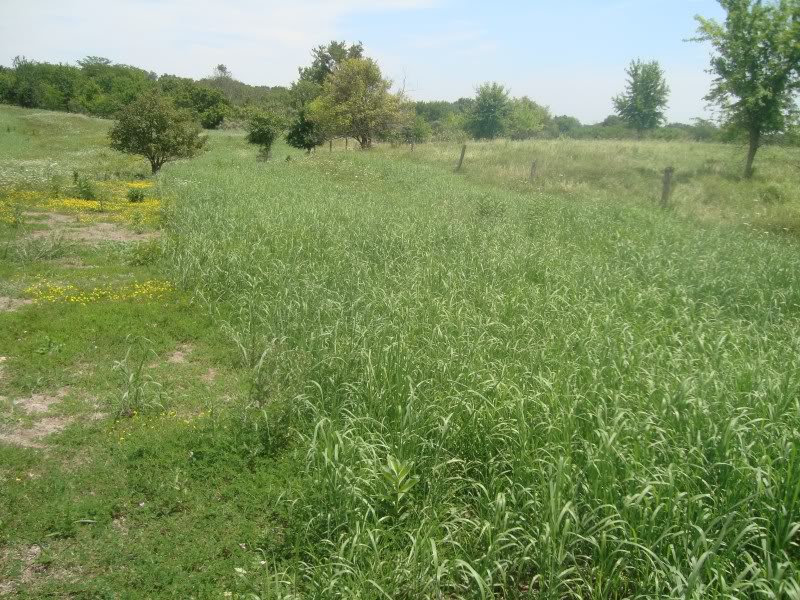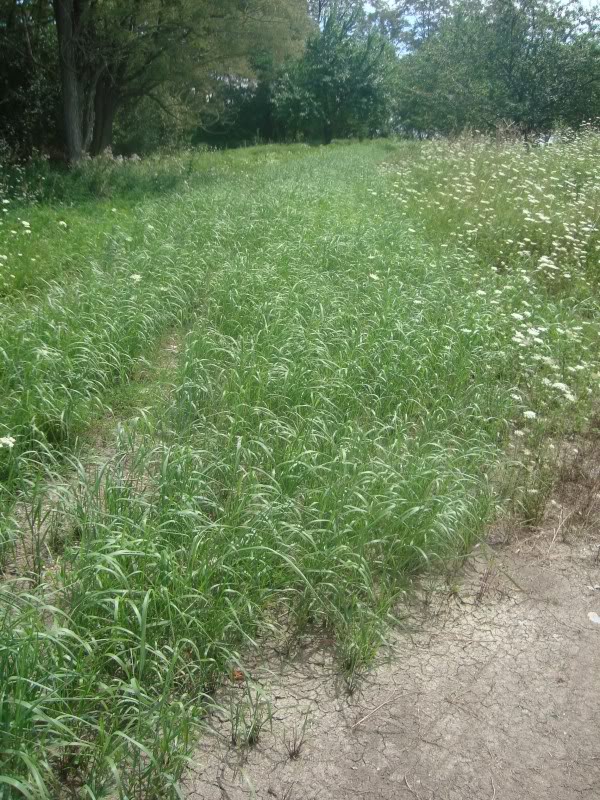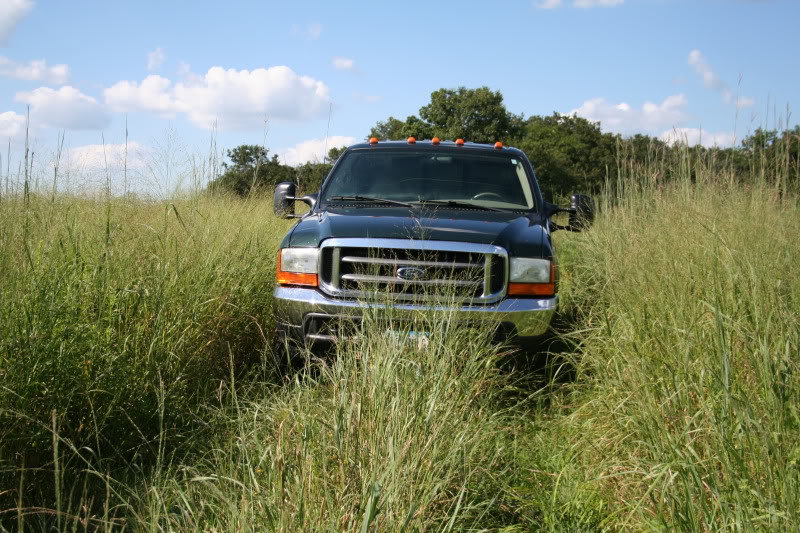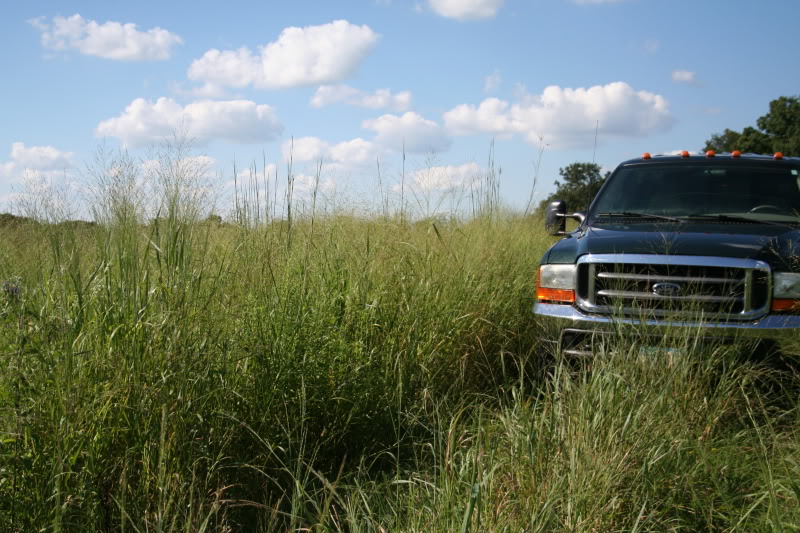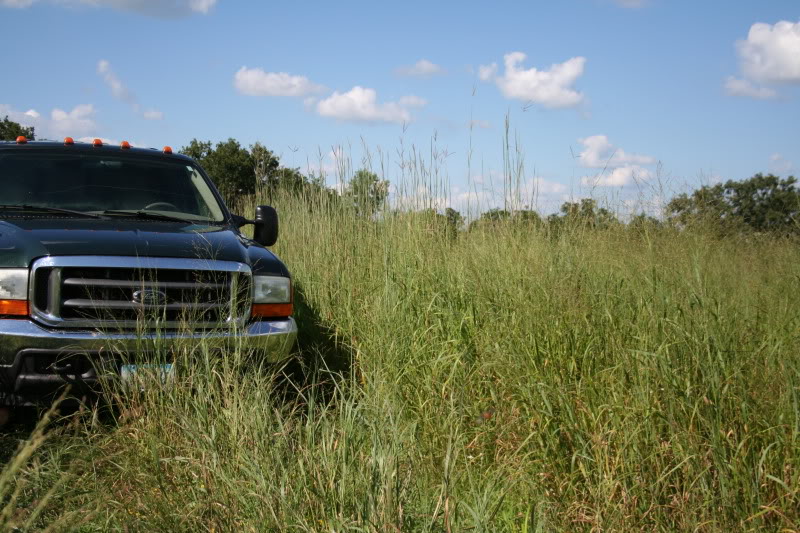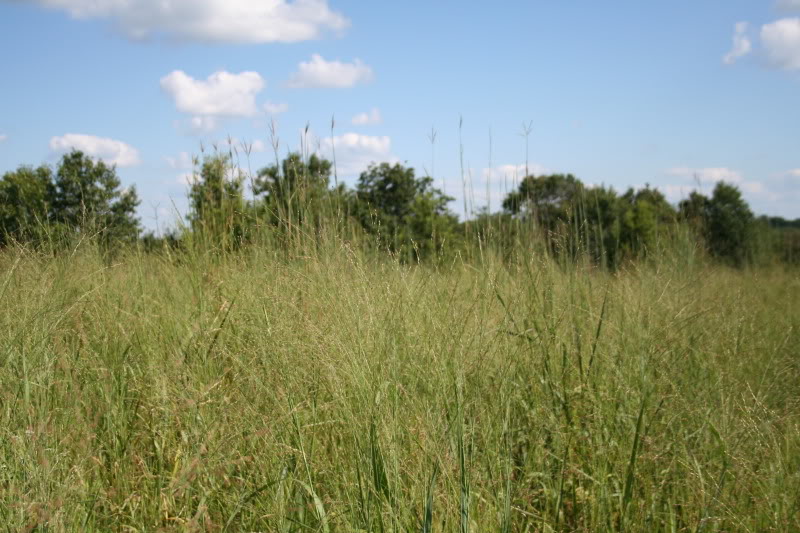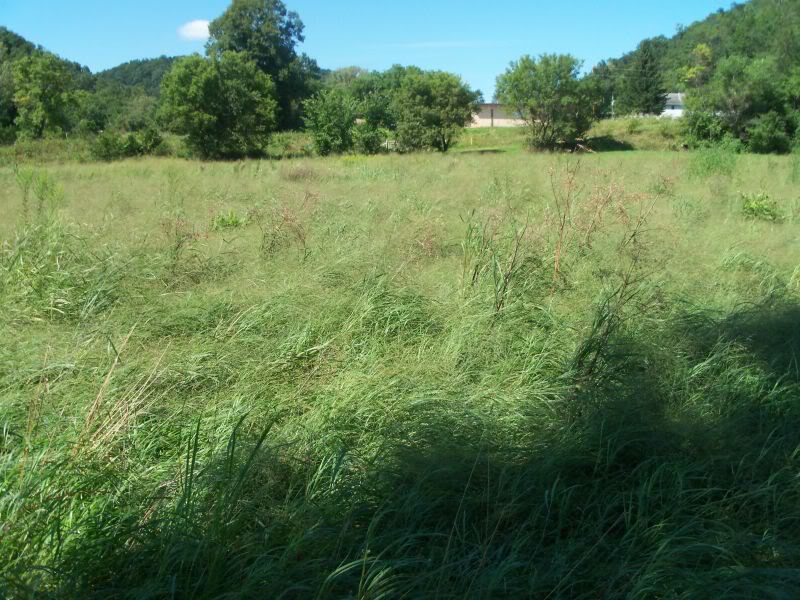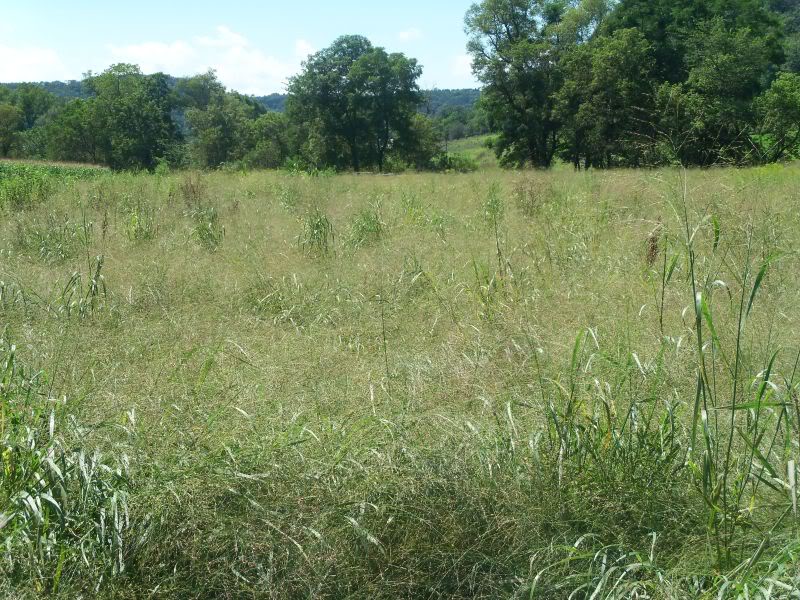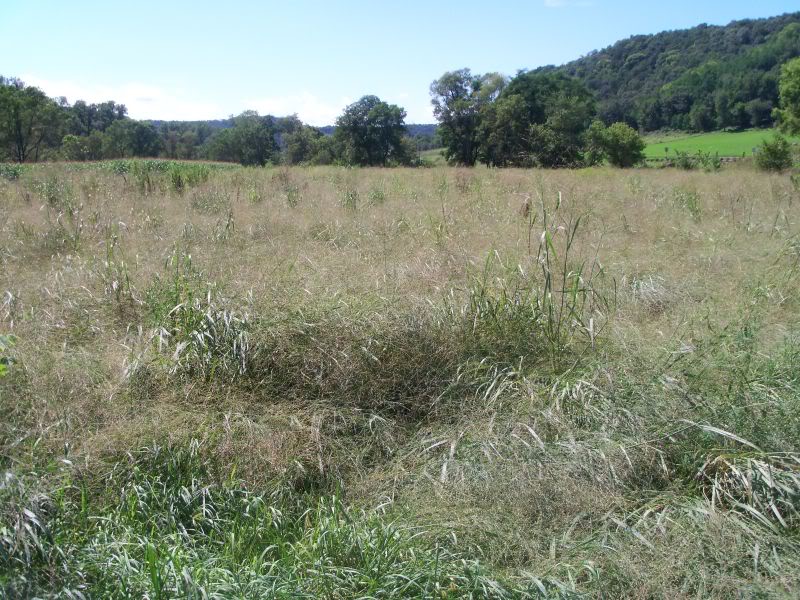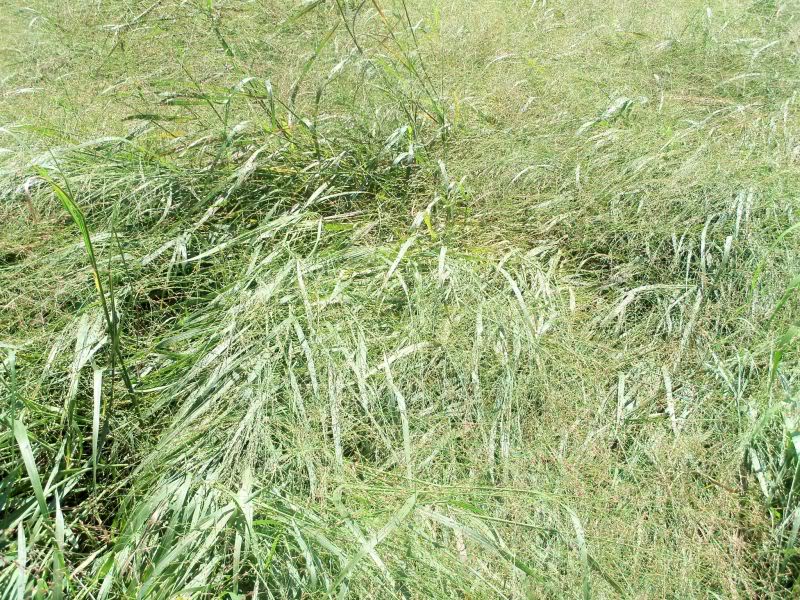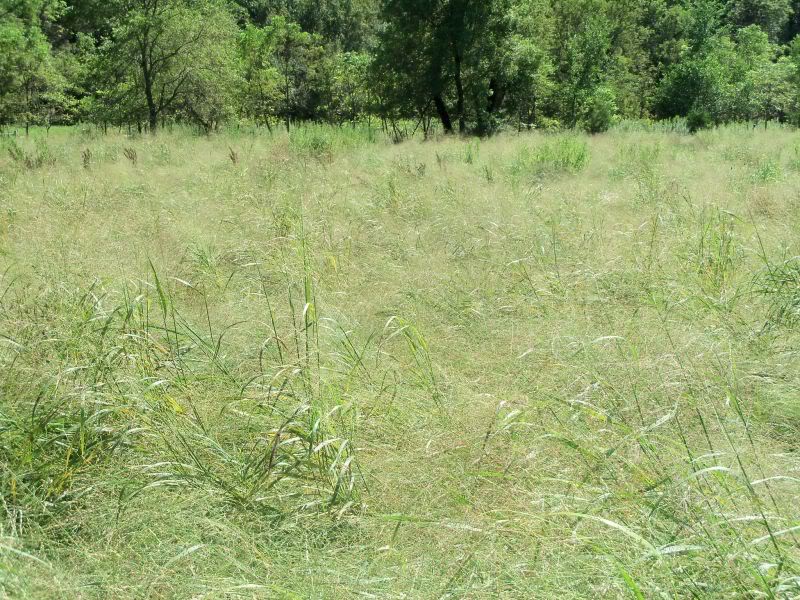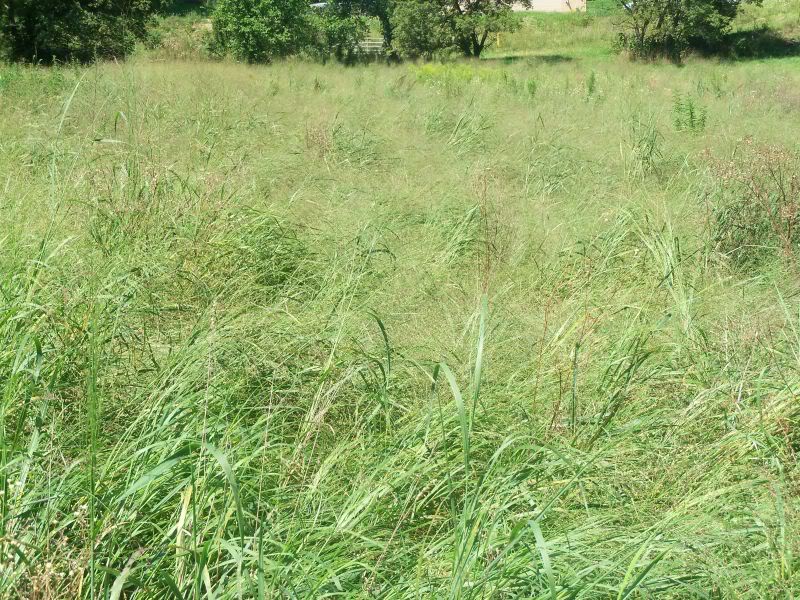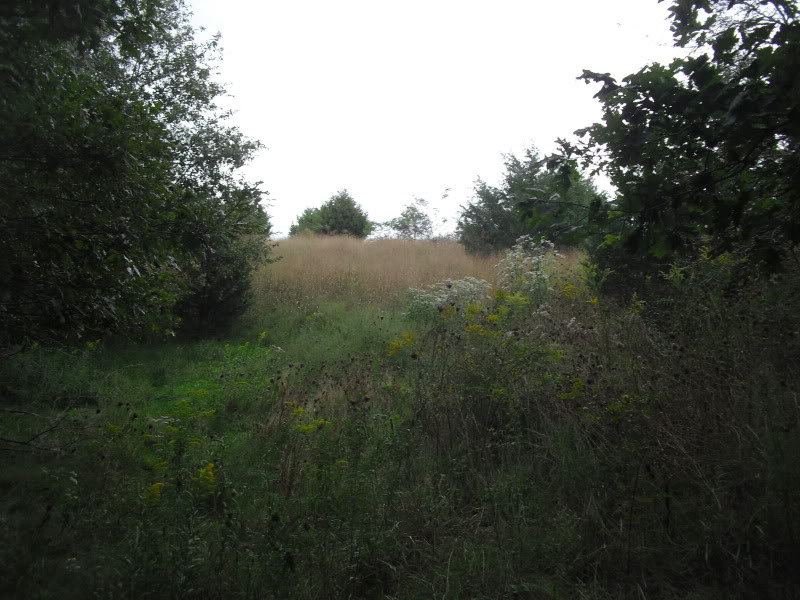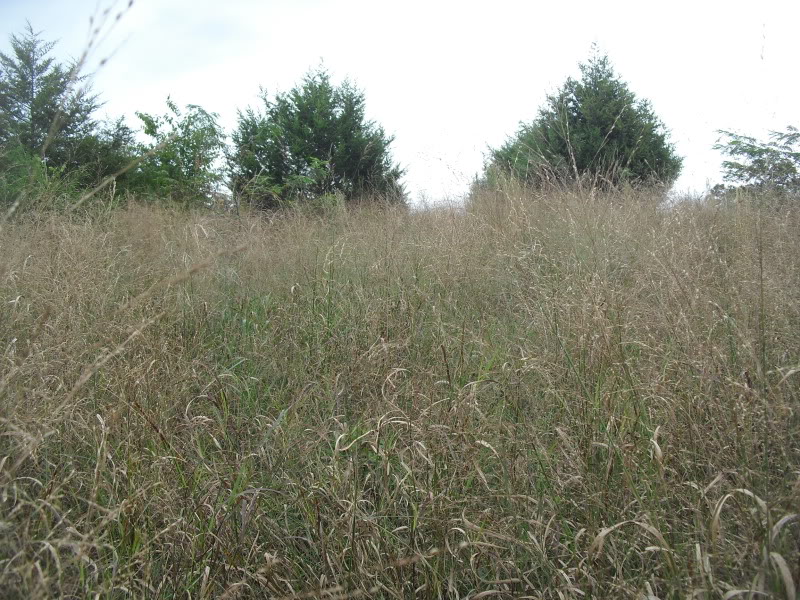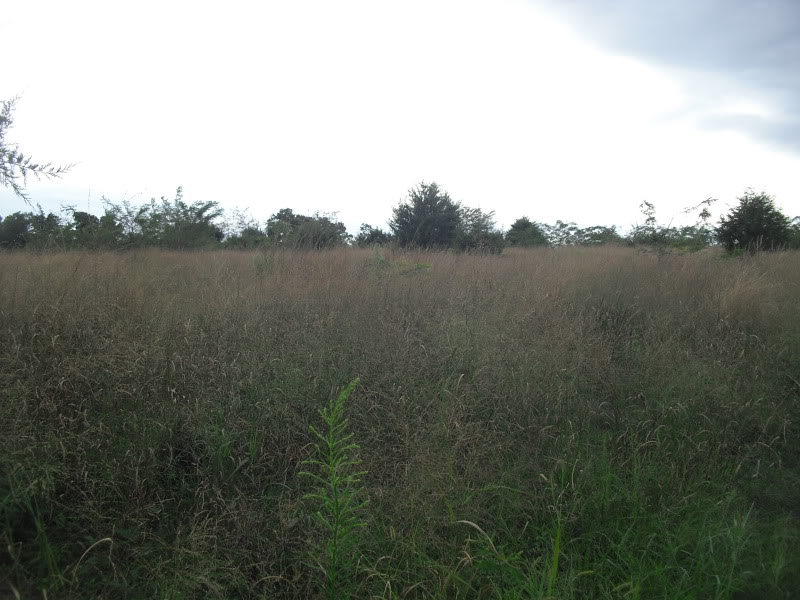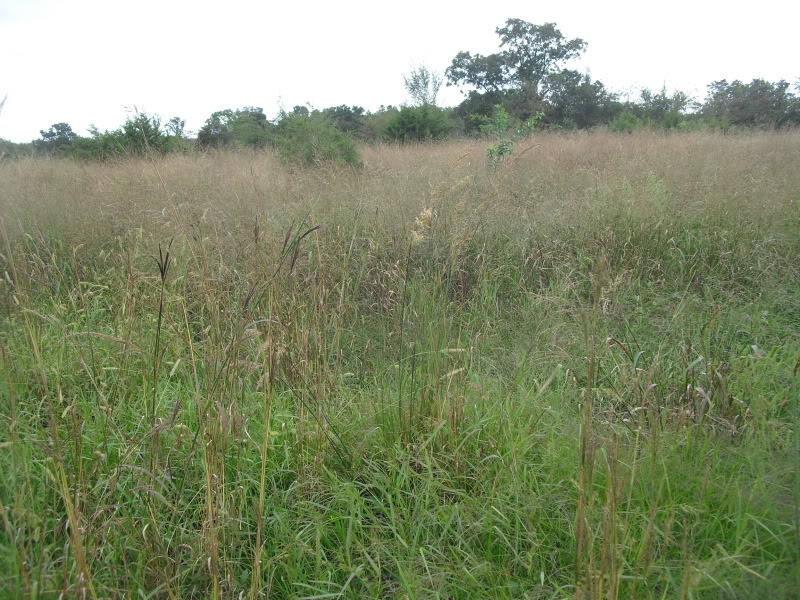Here are some pictures of our 2nd year CIR SG from one week ago. It is mostly about 5 feet tall, some a little taller than that even, and very thick. The corn in the background of these pics is organic that I plant as food plots for the wildlife. I rotary hoe it at 7 days after planting to get most of the weeds, and then cultivate with a 2 row tine cultivator when about 5" tall and knee high.
The top wire on the electric fence to the right in this pic is 6 feet high, to give an idea of how tall the SG is. The fence encloses 8.1 acres of planted white cedars (deer candy!) After planting this 2 times previously and having every one destroyed, I finally decided to fence them in after planting a third time. When they get about 7-8 feet tall (about 8 years from now) we will take the fence down and let the deer enjoy them!
Seed heads coming out
This pic is at the edge of the field, showing the clumps at the bases. There are some cool season grasses and weeds at the bottom of this pic, but that is on the outside of the CIR SG field. Inside the SG field is pretty much weed free! Thanks DT for your advice in establishing this CIR SG!
And these are pics of seedling (1st year) CIR SG from one week ago. As you can see, on the right, this field also borders the electric fence (8.1 acre white cedar planting). This past week with all the rain and heat, it grew quite a bit since these pics were taken, and the CIR seedlings in this field are waist high today.
There was one strip where thistles were coming in thick so I sprayed it with 2-4d a few weeks ago and the CIR here is thinner and smaller, but now it doesn't have to compete with the thick thistles anymore.
This field, only 100 yards away, but separated by a steep hillside between the other field, is much shorter and the CIR didn't come in as thick even though I did everything the same and planted the same day. There are also more weeds because the SG is thinner and the residual herbicide got more washed out from the excessive heavy rains since this field is steeper and sandier. The soil is sandier and lighter than the other field 100 yards away. I thought it would come up earlier with more direct south sun and sandier soil that heats up faster. I think some of the seed might have got washed out by heavy rains or buried too deeply because the soil was looser, steeper, and the cultipacker didn't firm the soil as good here.
That's another reason to frost seed instead of tilling, but if you remember from my earlier posts, I had a lot of leftover brassicas in these fields so I felt I better till it instead of frost seeding. It came up about 2 weeks later than the CIR in the field right next to it, and I was worried it was going to be a failure until I finally started to see it come up 2 weeks later than the other field.
Here are some close up pics of 1st year seedling CIR SG clumps












